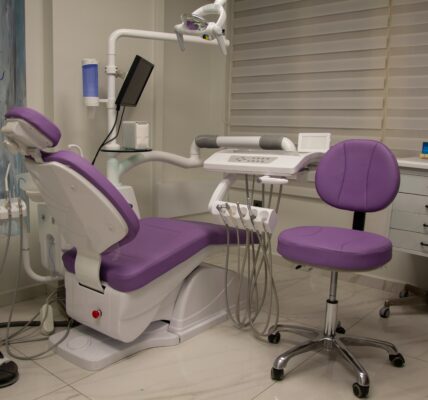Technology has been a driving force behind advancements in all fields of medicine, and cosmetic dentistry is no exception. Over the past few decades, significant strides have been made in dental technology, revolutionizing the way cosmetic dental procedures are performed and the results that can be achieved. These advancements have not only improved the efficiency and precision of treatments but have also enhanced patient comfort and satisfaction. Here’s an exploration of how technology is transforming cosmetic dentistry in Plano.
1. Digital Imaging and Design
Digital imaging has revolutionized the way cosmetic dentists plan and execute treatments. Instead of traditional molds and impressions, dentists now use digital scanners to create precise 3D images of a patient’s teeth and gums. These images are then used to design custom restorations such as veneers, crowns, and bridges. The benefits of digital imaging include:
- Accuracy: Digital scans provide highly accurate representations of dental structures, minimizing the need for rework and adjustments.
- Speed: The process of capturing digital impressions is faster than traditional methods, reducing chair time for patients.
- Customization: Dentists can use CAD/CAM (Computer-Aided Design/Computer-Aided Manufacturing) technology to customize restorations to fit each patient’s unique dental anatomy and aesthetic preferences.
2. CAD/CAM Technology
CAD/CAM technology allows dentists to design and fabricate dental restorations directly in the office or dental laboratory. This technology integrates digital imaging with computer software to create detailed designs that are then sent to a milling machine or 3D printer for fabrication. Key benefits of CAD/CAM technology include:
- Same-Day Restorations: With chairside milling, patients can receive crowns, veneers, and other restorations in a single visit, eliminating the need for temporary restorations and multiple appointments.
- Precision and Fit: CAD/CAM technology ensures precise fit and alignment of dental restorations, reducing the risk of complications and improving long-term outcomes.
- Patient Convenience: Patients benefit from shorter treatment times and fewer visits to the dentist, making dental care more convenient and accessible.
3. Laser Dentistry
Lasers have transformed various aspects of cosmetic dentistry by offering precise and minimally invasive treatment options. Laser technology can be used for:
- Gum Contouring: Reshaping the gum line to improve the appearance of teeth.
- Teeth Whitening: Accelerating the whitening process by activating bleaching agents.
- Soft Tissue Procedures: Treating gum disease, removing excess tissue, and performing biopsies with minimal discomfort and faster healing times.
- Cavity Detection: Diagnosing cavities at an early stage by detecting fluorescence changes in tooth structure.
Laser dentistry is preferred by many patients due to its precision, minimal pain, and faster recovery compared to traditional methods.
4. 3D Printing
3D printing technology has expanded the possibilities in cosmetic dentistry by allowing for the fabrication of highly detailed dental models, surgical guides, and even temporary crowns and bridges. The advantages of 3D printing in dentistry include:
- Customization: Dentists can create personalized dental prosthetics and appliances based on digital scans of the patient’s teeth.
- Efficiency: 3D printing reduces production time for dental devices and restorations, allowing for quicker treatment turnaround.
- Cost-Effectiveness: While initial investments in 3D printing technology can be significant, it can lead to cost savings in the long run by reducing labor and material costs.
5. Cone Beam Computed Tomography (CBCT)
CBCT technology provides three-dimensional images of the teeth, jawbone, and surrounding structures with exceptional clarity and detail. This advanced imaging technique is invaluable in cosmetic dentistry for:
- Implant Planning: Precise placement of dental implants by assessing bone density, anatomy, and nerve location.
- Orthodontic Treatment: Evaluating tooth and jaw relationships for more accurate diagnosis and treatment planning.
- TMJ Evaluation: Assessing temporomandibular joint (TMJ) disorders and planning appropriate treatment.
CBCT scans provide comprehensive information that enhances treatment predictability and outcomes in complex cosmetic dental cases.
6. Virtual Reality and Augmented Reality
Virtual reality (VR) and augmented reality (AR) are emerging technologies that are beginning to find applications in dental education and treatment planning. These technologies allow dentists to:
- Simulate Procedures: Practice complex procedures in a virtual environment before performing them on patients.
- Patient Education: Use AR to show patients potential treatment outcomes and help them make informed decisions about their dental care.
- Enhance Training: VR simulations can be used to train dental students and professionals in realistic scenarios, improving their skills and confidence.
7. Teledentistry
Teledentistry utilizes digital communication technologies to provide remote dental consultations, diagnosis, and treatment planning. This approach has become particularly valuable in cosmetic dentistry by:
- Improving Accessibility: Patients in remote or underserved areas can access expert cosmetic dental care without traveling long distances.
- Convenience: Virtual consultations save time for both patients and dentists, reducing waiting times and optimizing scheduling.
- Continuity of Care: Teledentistry facilitates follow-up appointments and ongoing communication between patients and their cosmetic dentists, ensuring comprehensive care.
8. Digital Smile Design (DSD)
Digital Smile Design (DSD) is a concept that combines digital technology with artistic principles to create predictable and customized smile transformations. DSD involves:
- Photographic Analysis: Using high-resolution images and videos to analyze facial and dental aesthetics.
- Smile Simulation: Designing a digital blueprint of the desired smile based on the patient’s facial features and preferences.
- Collaborative Planning: Involving the patient in the design process to ensure their expectations are met and exceeded.
DSD allows cosmetic dentists to visualize and communicate potential treatment outcomes effectively, enhancing patient satisfaction and treatment predictability.
Conclusion
Technology continues to revolutionize cosmetic dentistry by enhancing precision, efficiency, and patient satisfaction. From digital imaging and CAD/CAM technology to laser dentistry and 3D printing, these advancements enable dentists to deliver more personalized, minimally invasive, and aesthetically pleasing treatments. As technology continues to evolve, the future of cosmetic dentistry holds promise for further innovations that will further improve outcomes and expand access to transformative dental care. Patients seeking cosmetic dental enhancements can benefit greatly from these technological advancements, enjoying safer, more comfortable, and more effective treatments that help them achieve their desired smile with confidence.





